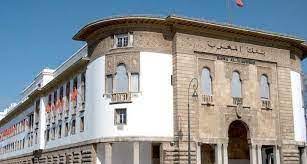APA – Rabat (Morocco) – Morocco’s central bank decided to leave the key rate unchanged at 3 percent at the end of its quarterly meeting in Rabat on Tuesday.
The Board of the Central Bank of Morocco discussed economic developments since its meeting last June. It noted the marked deceleration in inflation, which fell from a year-on-year peak of 10.1 percent in February to 5 percent in August, boosted by the measures introduced by the government, the easing of external pressures and the tightening of monetary policy.
According to the financial institution’s projections, this slowdown is set to continue, with inflation falling from 6.6 percent in 2022 to an average of 6.0 percent this year and 2.6 percent in 2024. Its underlying component would follow a similar path, falling from 6.6 percent to 5.6 percent and 2.3 percent, respectively. The Council also noted that inflation expectations in both the medium and long term fell significantly in the third quarter of 2023, and took note of the preliminary assessments which show that the transmission of its last three decisions to raise the key rate to monetary conditions and the real economy remains partial.
In view of all these data and the high level of uncertainty linked to international and domestic developments in the aftermath of the earthquake, the Board of the ‘Banque du Maroc’ has decided to keep the key rate unchanged at 3 percent. At its forthcoming meetings, its decisions will take account of the data available to the Bank on the economic and social impact of the earthquake, and on the actions taken by all the parties involved.
After slowing to 1.3 percent in 2022, growth is expected to improve gradually to 2.9 percent in 2023 and 3.2 percent in 2024, excluding the consequences of the Al Haouz earthquake and the impact of the reconstruction and recovery measures announced. This development would be the result of a 5 percent increase in agricultural value added in 2023 and 5.9 percent in 2024, assuming an average cereals production of 70 million quintals. Growth in non-agricultural activities is expected to slow to 2.6 percent in 2023, followed by an acceleration to 3 percent in 2024.
In terms of the external accounts, after the strong growth of the last two years, trade in goods is expected to show a virtual stagnation in 2023 before a relative recovery in 2024. Exports are expected to be virtually stable this year, with a marked fall in sales of phosphate and derivatives and a sustained rise in sales of the automotive sector. Exports are expected to strengthen by 5.8 percent in 2024, mainly reflecting the expected recovery in phosphate and derivatives exports to MAD 84.6 billion and the continued good performance of the automotive sector, with sales of MAD 155 billion.
At the same time, imports are expected to remain at the same level in 2023 as in 2022, with reductions in the energy bill to MAD 149.1 billion and acquisitions of semi-finished products, as well as an increase in purchases of consumer and capital goods. They are expected to grow by 2.2 percent in 2024, driven by increases in imports of semi-finished products and consumer goods.
In addition, taking into account the significant achievements during the summer period and the expected effect of the major international events that our country is expected to host in the coming months, travel receipts should increase by 23.4 percent to MAD 115.5 billion in 2023, before falling by 4.9 percent to MAD 109.9 billion in 2024.
Remittances from Moroccans living abroad are expected to rise by 2.5 percent in 2023 and 3.6 percent in 2024 to MAD 117.5 billion. Under these conditions, the current account deficit should be around 2% of GDP in 2023 and 2024, after 3.5 percent in 2022. With regard to foreign direct investment (FDI), receipts would be maintained at the equivalent of 3 percent of GDP in 2023 and 2024. All in all, and taking into account the external financing provided and planned by the Treasury, the official reserve assets should stand at MAD 361.8 billion at the end of 2023 and then at MAD 363.8 billion at the end of 2024, i.e. cover around 5 and a half months of imports of goods and services.
In terms of public finances, the budget outturn for the first eight months of 2023 showed a 4.9 percent improvement in ordinary revenues, driven in particular by higher tax receipts. At the same time, overall expenditure rose by 5.9 percent, reflecting the increase in investment expenditure, spending on goods and services and the interest burden on the debt. Taking into account these achievements and the expected trend in economic activity, the budget deficit should, according to the Bank’s projections, ease slightly from 5.2 percent of GDP in 2022 to 5.1 percent in 2023 and 4.9 percent in 2024.
HA/fss/as/APA


